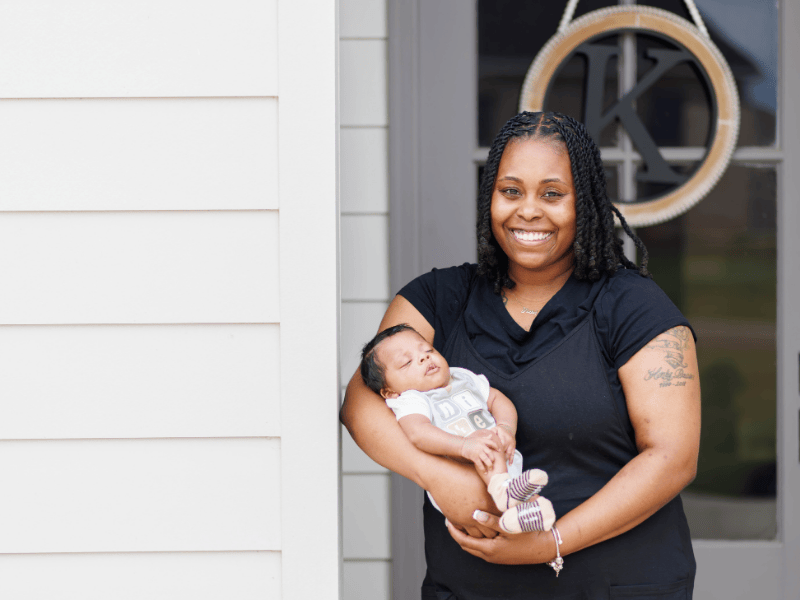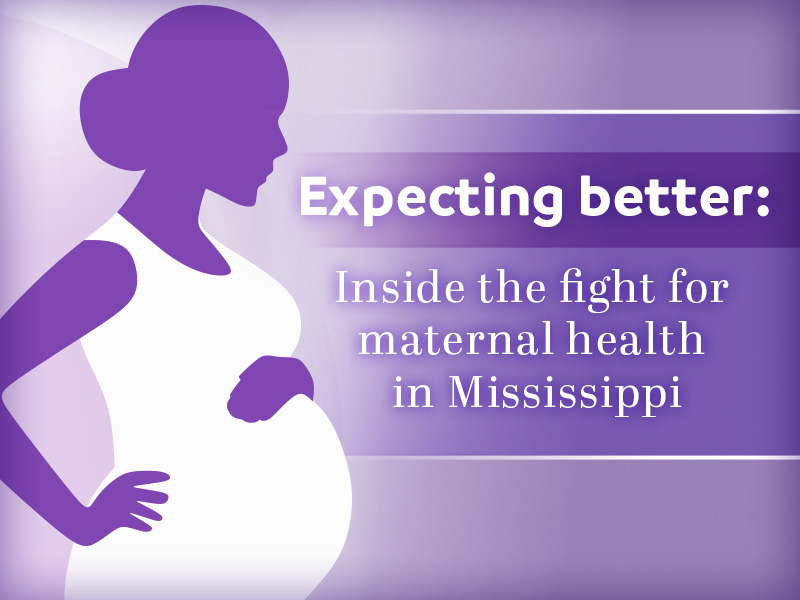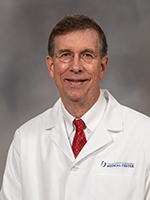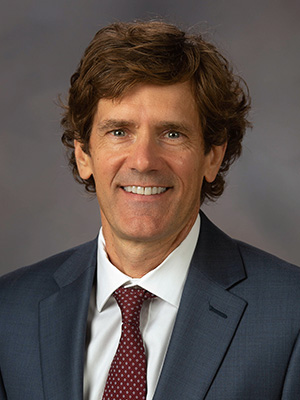Expecting better: Mississippi’s record on maternal health is a reversible tragedy

Editor’s Note: Over the next three weeks, we will take a closer look at the University of Mississippi Medical Center’s work through its three-part mission of education, research and health care to address the state’s maternal health crisis. These stories, which will be part of an occasional series examining the state’s only academic medical center’s role in fighting some of the most pressing health issues, share the experiences of caregivers, researchers, patients and learners. We hear from those affected by maternal health challenges and from those who are fighting against them in the hospital room, lab and classroom.
 When Brianca King became pregnant, she was fighting diabetes, high blood pressure, frequent vomiting – and for more time.
When Brianca King became pregnant, she was fighting diabetes, high blood pressure, frequent vomiting – and for more time.
But time ran out on March 19, when she delivered her baby at the University of Mississippi Medical Center – seven weeks early.
“It was very scary,” said King, 29, of Gluckstadt. “I had already been hospitalized 15 times. In the end, I had an emergency C-section.”
Although premature, Parker Rowen King was born weighing six pounds, three ounces to a mom who, like him, is thriving.
High-risk pregnancies – those with greater chances of complications for mom, baby or both – don’t often end so well, especially for Black women in Mississippi.
Black, Non-Hispanic women accounted for 78% of all the pregnancy-related deaths in Mississippi from 2017-2021, a rate more than 4.5 times that of White, Non-Hispanic women – one of the more salient statistics from the April 2025 Mississippi Maternal Mortality Report released by the Mississippi State Department of Health.

“One death is tragic; one is too many,” said Dr. J. Martin Tucker, UMMC professor and Winfred L. Wiser Chair in Obstetrics and Gynecology.
“Many women, for whatever reason – inability to pay, lack of transportation – aren’t able to access prenatal care. So, problems worsen before they get to the doctor or nurse or midwife.
“We need to make sure they get into the health care system. We need to make sure those with complications can get to the right places for prenatal and delivery care.”
There is a reason many don’t get to the right places, said Dr. Daniel Edney, state health officer with MSDH.
“This is not pointing fingers at anybody, but we must recognize that we have a health care system that is discriminatory as far as access – just look at the numbers,” Edney said.
“The numbers tell us everything – our moms of color aren’t listened to as they should be, some warning signs are ignored.”
Improving those numbers, even a little, can be meaningful for the state’s moms and babies, Tucker said.
“Getting the number as low as we possibly can is what we are aiming for.”
In some cases, that can mean confronting cultural issues, Edney said. “Their mom or grandmother didn’t have early prenatal care; they may not have learned that it could save their life.”
A different story
King learned it. A pediatric nurse at UMMC, she valued early prenatal care.
“I’ve been a diabetic for 14 years,” she said, “so, I knew at the beginning of my pregnancy that there would be difficulties.”
Those included pre-eclampsia – pregnancy-related hypertension which, untreated, can mean the death of the mother and baby. As it is, her son remained in the NICU for 19 days.
Because of her risks, King began seeing, early on, maternal-fetal medicine specialist Dr. Rachael Morris, UMMC associate professor of obstetrics and gynecology.

“Dr. Morris and her high-risk team worked with me, my endocrine team and my internal medicine doctor,” King said. “Day in and day out, she checked on me.
“I believe that kind of care I received is the reason my story was quite a bit different than it could have been.”
In the years between 2017 and 2021, the stories of 202 Mississippi women were tragically different. That’s how many died during pregnancy or within a year following the birth, the mortality report concludes.
Of those deaths, 77 were directly related to pregnancy or were aggravated by pregnancy or its management. Mississippi’s maternal mortality rate is 23.2 per 100,000 live births, compared to 18.6 for the U.S.
“We need to try and get our arms around women with high-risk pregnancies,” Edney said. “Those are the ones driving up our numbers.”
For a more recent period, 2018-2022, Mississippi’s pregnancy-related death rate, 58.2, was exceeded only by Alabama’s, as reported in JAMA Network Open.
If the numbers are dismal, they’re not unbeatable. Of Mississippi’s pregnancy-related deaths recorded in the MSDH report, 83.1% were deemed preventable.
“Our approach should be that you can always improve,” Tucker said. “I’m eternally optimistic; on the other hand, I know these problems did not start last week and I realize they can’t be solved next week.”
Just listen
One of the problems: “African-American women of child-bearing age often live in an obstetrics desert,” Edney said. “It’s more difficult for them to go to the doctor early in pregnancy.”

Several of these OB deserts border, or lie near, the Mississippi Delta’s Leflore County, in Greenwood, which has a strong hold on one of its natives, OB-GYN physician Dr. Murry Adams. At the UMMC Greenwood Women’s Clinic, he and three nurse practitioners see an average of 300 patients a week, Adams said.
“Knowing that the Delta is underserved only increases my calling to care for these people,” he said. “I enjoy hearing their stories and giving them quality health care in a place where they would not otherwise have access.”
Many of those patients have difficulty finding transportation; some of those who can get to the Greenwood clinic come from a half-dozen other counties, said Adams, who also covers OB and GYN calls and performs surgery at UMMC Grenada in nearby Grenada County.
“If the Greenwood and Grenada clinics weren’t there, patients would have to travel further for consults and likely end up needing to go to either Jackson or Memphis from these areas,” Adams said. “Many are not comfortable traveling frequently to Jackson or the larger cities.”
Patients who can’t, or don’t, seek prenatal care risk high blood pressure and diabetes in pregnancy; some may even be unaware of the danger signs, Adams said. Those conditions, if left untreated, could endanger the health and life of the mom and baby, he said.
“The risks include preterm labor, growth abnormalities, birth complications, pre-eclampsia, placental abruption [separation] and even still-births.”
For the latter years covered in MSDH’s mortality report, many women were sickened by another condition: COVID-19.
“It was terrible to watch,” Edney said. “To save the baby, there were C-sections on women in the throes of death when there was nothing else you could do for them. Without COVID, they most likely would have survived.
“While knowing which pregnancies were related to COVID is useful, this still doesn’t tell us about pregnancy-related deaths today, when there is population immunity. So, MSDH experts separated out those COVID deaths for the mortality report.
“The rate, then, was maybe a little better than previous years.”
For those who didn’t survive, a heart condition was most likely the cause, Edney said. “Educating women on risks and dangers is a way to prevent more deaths.
“Many women don’t know their blood pressure or blood sugar numbers. They have not been taught that women age 35 and older have high-risk pregnancies.
“They don’t know that having pregnancies within 18 months of each other increases the risk of death.
“But the medical community also needs to listen and learn. We need to understand that women on Medicaid make up more than 80 percent of maternal deaths. Women who qualify for it tend to be an even more vulnerable population, and that’s why we need to pay better attention to them.
“We need to understand that substance abuse is a factor. With the proper services, those deaths are also preventable.”
Other preventable deaths include those related to poor mental health, such as postpartum depression.
“And we need to understand that African-American women of child-bearing age must have access to primary care homes,” Edney said. “When we better address such issues, our outcomes should improve.”
UMMC, for one, is trying to make a difference, marshalling the resources of its three main missions: research, education and patient care.
Research high and low

“We’re among the tops in the world in researching a key risk factor and providing knowledge,” said Dr. Joey Granger, UMMC professor of physiology and biophysics, and former dean of the School of Graduate Studies in Health Sciences.
“The Medical Center ranked fourth in the U.S. [from 2000 to 2020] and tied for 10th in the world for the number of publications produced on the subject of pre-eclampsia,” he said, citing a 2022 study published in the Journal of Hypertension.
“But Mississippi’s rankings on maternal health remain stubbornly low despite a vigorous effort by UMMC researchers into some common causes of high-risk pregnancies. However, several of our findings from our bench research are now being translated into clinical trials.”
High-risk pregnancies can prove tragic for the baby as well. Mississippi had the highest rate of infant deaths per 1,000 live births as of 2022: 9.11%, reports the Centers for Disease Control and Prevention.
“We need to get that baby to its first birthday party; when you do that, the baby has a good chance,” Edney said.
Still, in Mississippi, the rate of live births fell every year from 2019 to 2023 – 36,634 to 34,354, a 6% decrease, MSDH reported in January 2024.
In fact, Tucker said, “our live birth rate has decreased every year for at least the last 10 years, even though there’s an upturn in other states. At UMMC, though, we’ve seen an uptick in deliveries – because other clinics have closed down.
“But a lot of our patients are sicker now than ever before. We still have high rates of pre-term births.
“We have many things to work on, from both the maternal and baby sides. Awareness is key, and we understand now the depth and breadth of the problem. To that end, Dr. Edney’s leadership in the state has been great.”
For his part, Edney is hopeful. "We’re bringing in as many stakeholders and community partners as we can to work on this. I see it beginning to make a difference and see it continuing to do so over the next five years.”
Education benefits
For years, UMMC trained four new OB-GYN residents each year. Four years ago, the number grew to six.
“Two more may not sound like a lot, but it’s two more a year for the past few years,” Tucker said.
On top of that, in April, the Medical Center received approval for a brand-new OB-GYN rural residency track program; it will mean adding one more resident each year. Interviews for this position will begin in the fall.
“We’ve also established a certified clinical midwife program with five practicing CNMs and we’re on the way to eight,” Tucker said. “This will mean better access to prenatal and post-partum care for women in central Mississippi.”
Patient lifts
In the quest to reduce maternal deaths, UMMC is “a big partner with MSDH, as is the Division of Medicaid,” Edney said. “The state legislature, too, cares about this; we have had special state funding, for which I’m grateful.”
Measures or programs in place or in the works include:
Healthy Moms, Healthy Babies of Mississippi: In all 82 counties, mothers and babies with identified health risks get help finding a medical home, connecting them to such services as Medicaid and the Supplemental Nutrition Assistance Program; and getting referrals for family planning, mental health, transportation, housing, child care, employment and more.
A proposed OB System of Care will ease the transfer of women with high-risk pregnancies to the right level of care by first responders at the right time, quickly and before delivery through a 911 call, Edney said. Promoting the Hear Her Campaign created by the CDC to encourage providers and others who support pregnant and postpartum women to heed their concerns. UMMC’s STORK program “educates first responders around the state to recognize problems that pregnant women have so that they know how to treat them more aggressively and earlier,” Tucker said.

CenteringPregnancy is group-based prenatal care that brings together women due around the same time for regular visits, allowing them to support each other and offering them more time with providers. The Department of Obstetrics and Gynecology, along with the School of Population Health, is launching the program that, in other states, “has shown to be effective in producing healthy pregnancies and reducing pre-term births,” said Dr. Thomas Dobbs, dean of the school and former state health officer. The hope is to have CenteringPregnancy in place by August, Tucker said.
Through the Myrlie Evers-Williams Institute, UMMC is making sure post-partum moms with hypertension receive proper postnatal care by providing them with transportation, referrals, breast-feeding programs and more.
Many measures are for women who are already pregnant, Dobbs said. “Those would make big differences. But it’s even more important to also think about what a mom brings to her pregnancy.
“The first step is to improve the state’s baseline health; it’s a long-term strategy to make people healthier in general. And it’s not easy to do.”
It helps that UMMC has “the pinnacle of expertise in the state – including Dr. Tucker and Dr. Rachael Morris,” Dobbs said. “They are doing a great job making sure we have the clinical resources.”
To make sure more Mississippi women and babies survive pregnancy, the state needs that level of expertise, just as it needs those partnerships between public health, private sector medicine, elected officials, community leaders and others, Edney said.
“I’m cautiously optimistic. We have gotten off the bottom when it comes to maternal deaths. But we are last with our babies. My goal is not to get off the bottom, but to get off the radar.
“So, when people talk about maternal and baby deaths, they don’t automatically think of Mississippi. We’ll get there; I’m determined that we will.”


